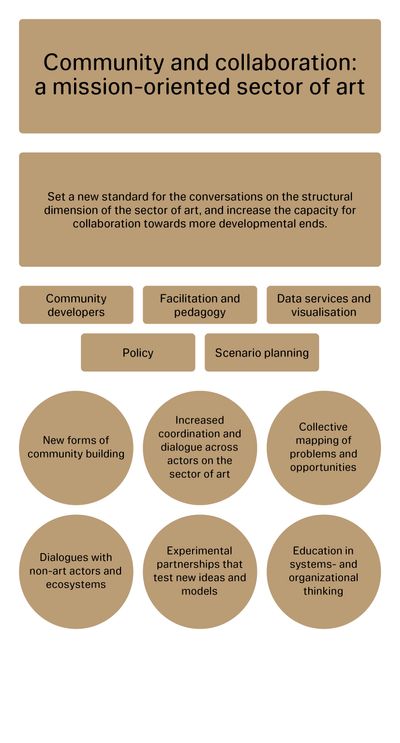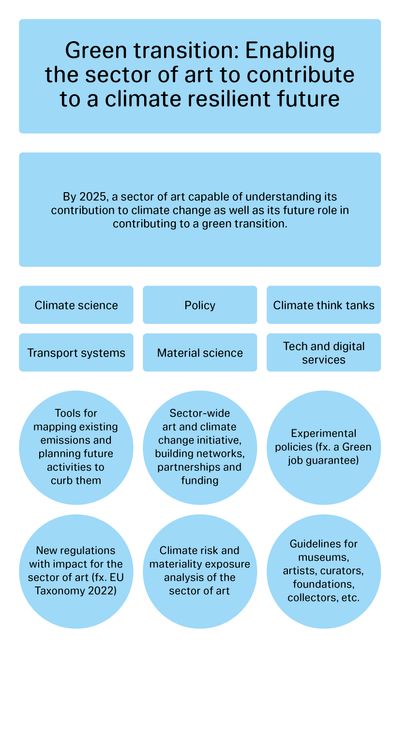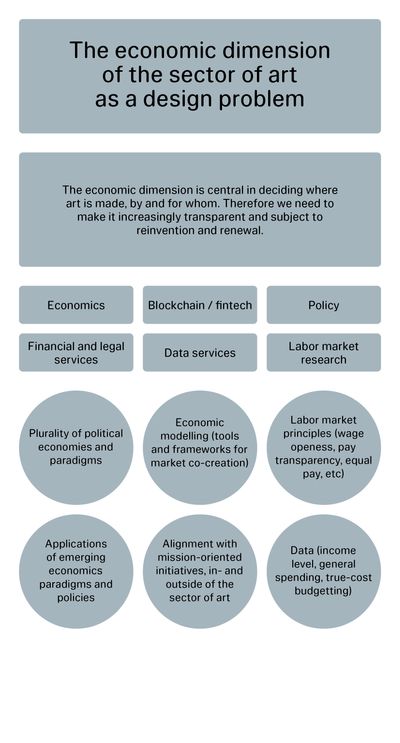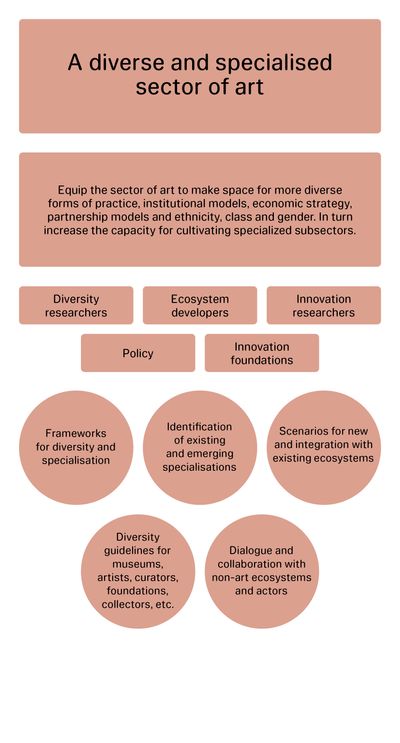Mission and strategy
UKK is a professional organisation for artists, curators, and art mediators. We work for a sector of art with more diversity, new forms of practice, and mission-oriented structural development.
As an outcome of a development project, we have identified four missions, each of which provides a perspective for where we would like to see the sector of art develop over the coming years.
Community and collaboration: a mission-oriented sector of art
If we want a more robust and coordinated sector of art, capable of undergoing structural change, we need a stronger dialogue across the entire sector. This mission will initiate new conversations on the structural dimension of the sector of art in Denmark, across our members in UKK, interest organisations, art institutions, private and public foundations and the general public.
By 2025 this mission will work to:
- Create more diverse relationships and forms of community with our members and other actors on the sector of art
- Introduce ambitious mission-driven conversations about the future sector of art we desire to create together
- Inspire a new class of initiatives and collaborations, judged on their ability to contribute a more diverse, mission-oriented and specialized sector of art
For an in-depth view of this mission, please view our working document here.

Green transition: enabling the sector of art to contribute to a climate resilient future
The challenge of climate change is an opportunity for the sector of art to fundamentally reinvent how it interacts with societies and environments.
The sector of art is deeply embedded in material dependencies, routines and economies that contribute to climate change. Examples include extensive travel activity, transport and storage of works of art, extractive resource use and art as an instrument for financialization of economies. Currently, there are no signs of a coordinated effort to recognise those dependencies and impacts of its activities on the climate.
The purpose of this mission, is to ask ourselves: if, by 2025, we would like to arrive at a place where we have a better understanding of the contribution to climate change by the sector of art, as well as a grasp of how the sector of art can contribute to adaptation and mitigation of it, what should we do today?
By 2025, this mission will work to:
Equip the sector of art with the frameworks and tools for understanding its contribution to climate change
Develop frameworks and ideas for how to prepare the sector of art, to contribute with aesthetic expertise to efforts tasked with building adaptive capacity in the face of climate change
Contribute to the establishment of ecosystems, to ensure ongoing efforts tasked with mitigation of and adaptation to climate change
For an in-depth view of this mission, please view our working document here.

The economic dimension of the sector of art, as a design problem
The economic dimension of the sector of art is central in deciding where and how art is made, by and for whom. While much has been said and written about financialization and the economic dimension of the sector of art, no concerted effort to tackle this dimension as a design problem has been initiated. The purpose of this mission is to develop a new knowledge base, so as to provide a better understanding of its role in the sector of art, and on the back of that, provide new ideas and perspectives for how we may develop and design new economic models and structures.
By 2025 this mission will work towards:
- Equip the sector of art with knowledge, principles and data for understanding and providing transparency around the economic dimension
- Develop frameworks, ideas and educational resources, for how to approach the economic dimension of the sector of art, as a design and engineering problem
- Pivot the sector of art towards a situation where the economic dimension is subject to ongoing reinvention and adjustment
For an in-depth view of this mission, please view our working document here.

A diverse and specialised sector of art
By diversity, we think of diversity in all its forms; class, gender, bodies, ethnicity, forms of artistic practice, institutional models, economic possibilities, partnership models, etc. But qualities of diversity can only emerge, if we have a clear grasp of how they are enabled or constrained, and on the back of that, know how to plan and design for them.
We believe that diversity is coupled with specialisation, in the sense that if we become more capable of providing space for diversity in all its forms, we will see more specialised parts of the sector of art emerge. Examples include places where the sector of art works closely with the health sector, public space and urban development, science and technology and social initiatives. All of these are examples of where artists enter situations with steep learning curves, where we believe more support is required than what our sector currently succeeds in providing.
The ambition of this mission is to develop a new knowledge base, tasked with qualifying the discussion on diversity and specialisation, in order to inspire how we become better at creating space (institutional, economical, relational, etc.) for both.
By 2025, this mission will work to:
- Develop a new knowledge base, in the form of frameworks for diversity and specialisation
- Inspire ideas and perspectives, for how to be aware of and design for both, at the level of artistic practices, institutions, economic models, and more
- Amounting to ideas for novel ecosystems around new types of more diverse and specialised artistic practices
For an in-depth view of this mission, please view our working document here.
